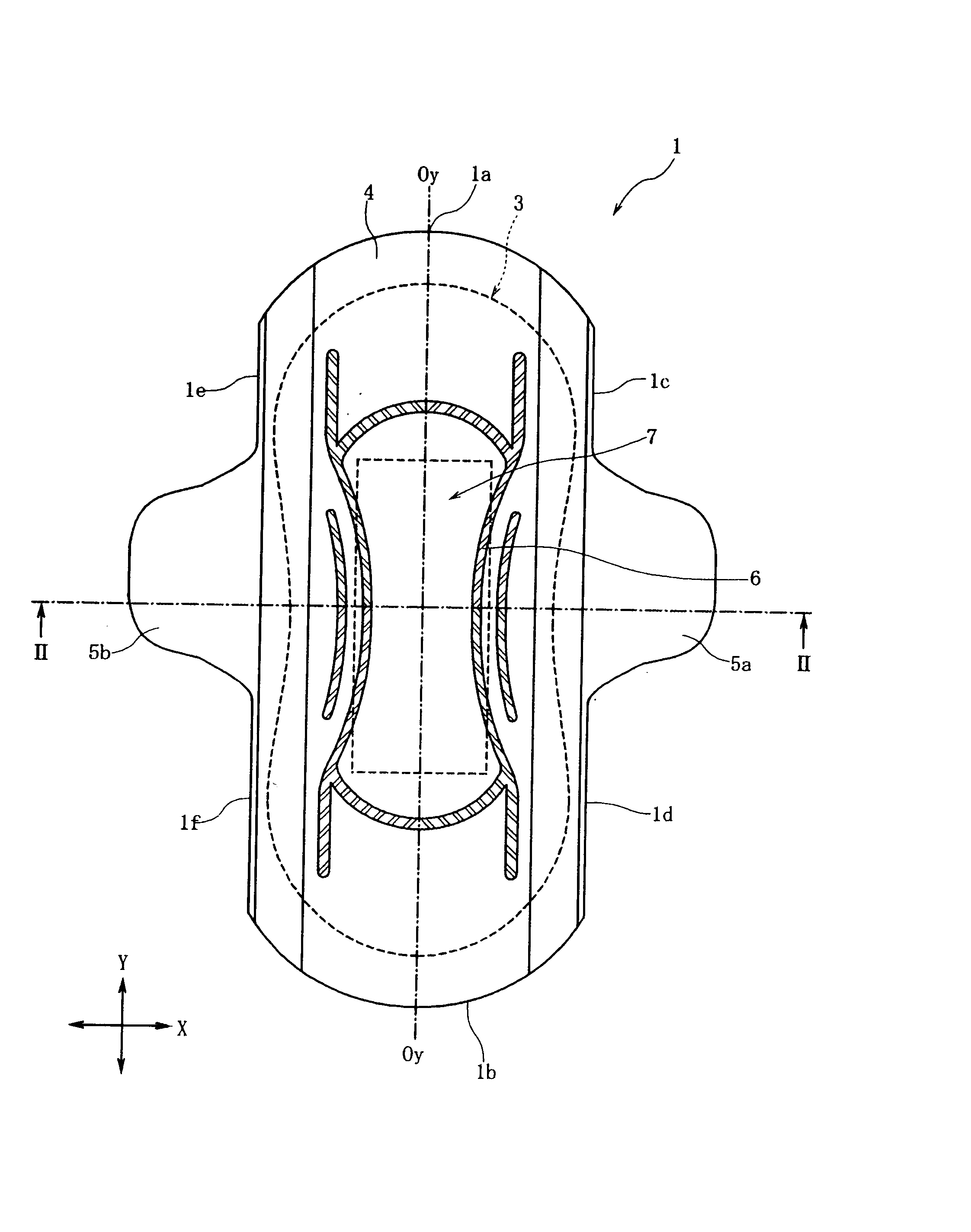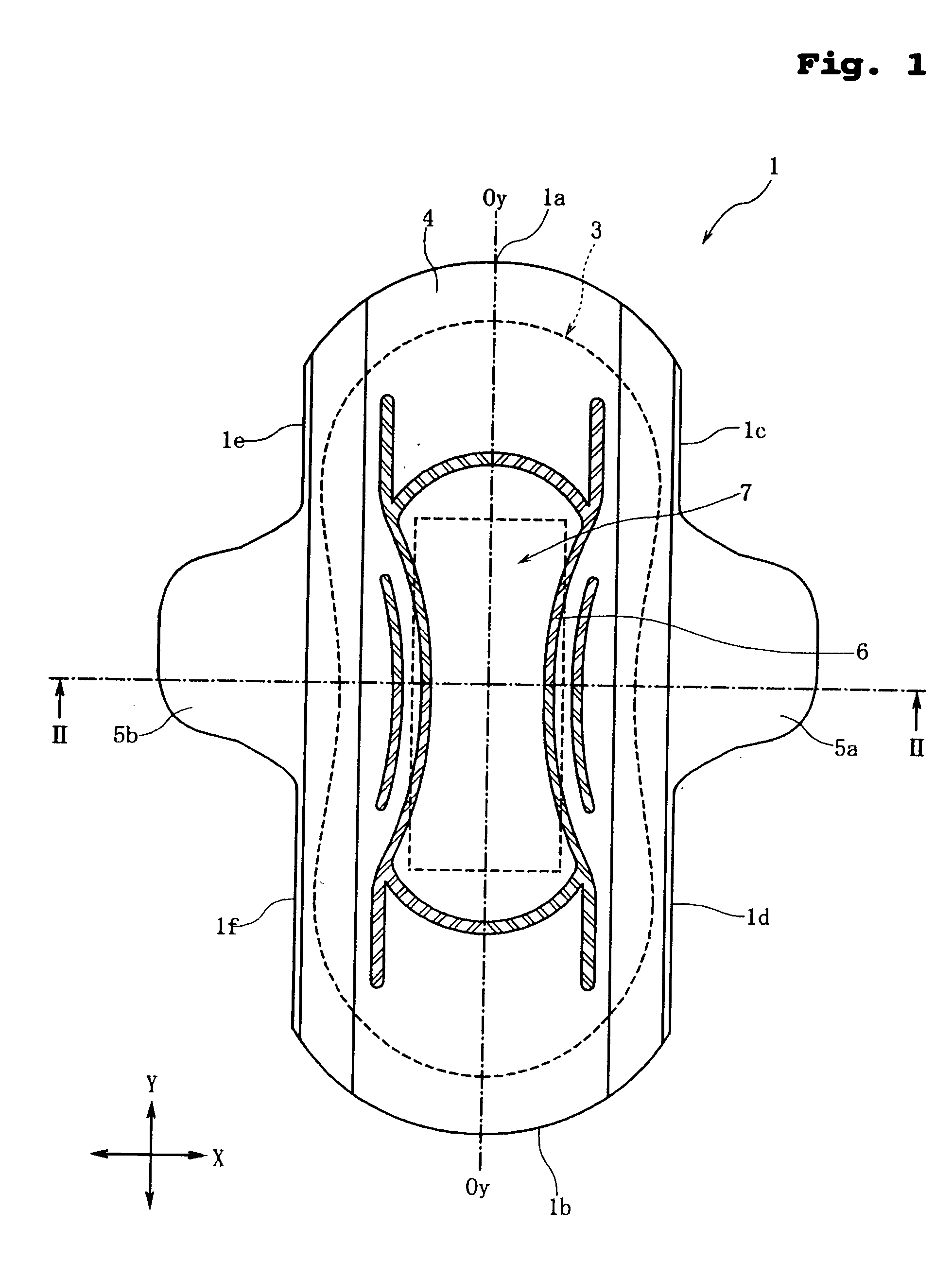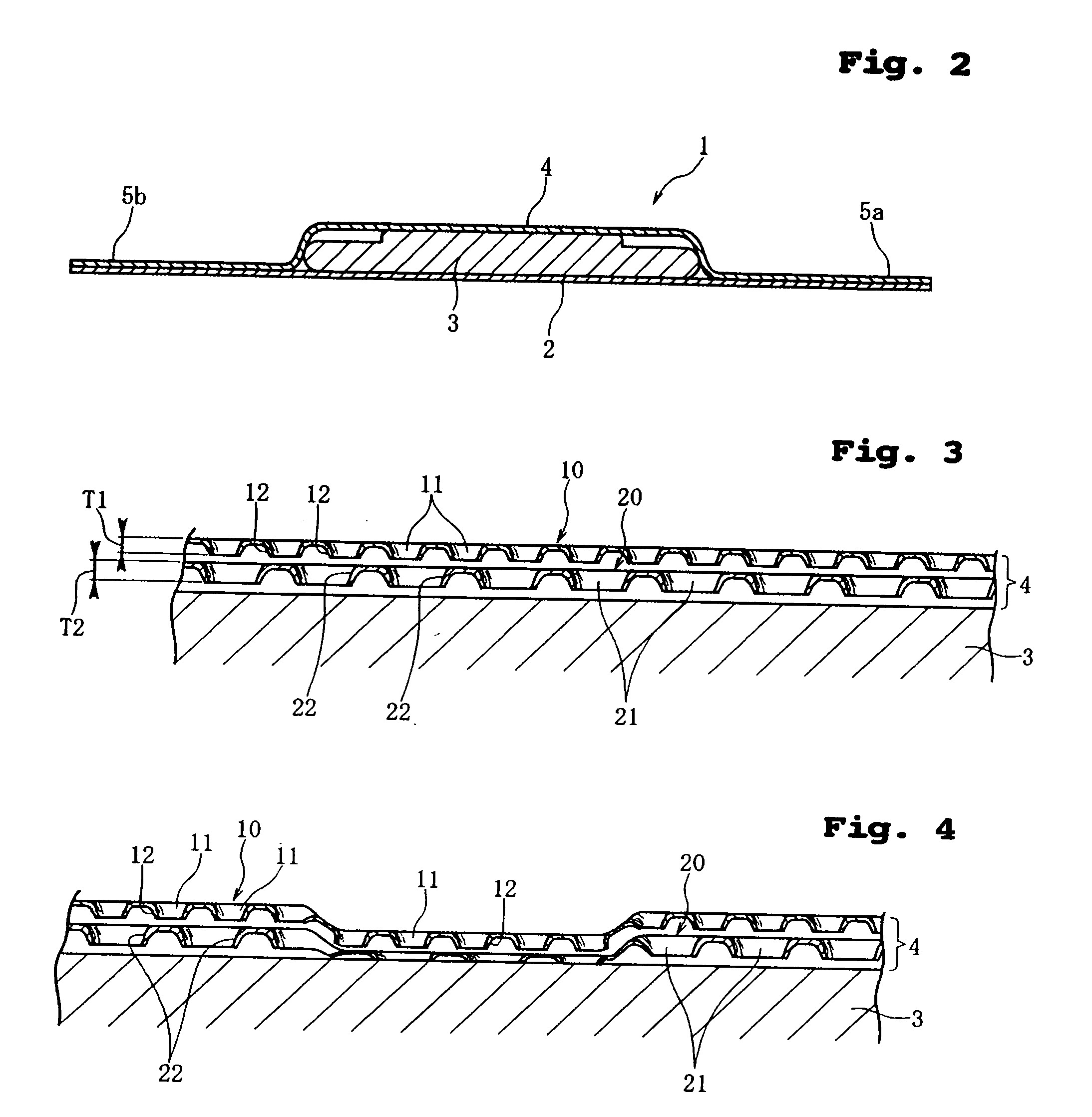Absorbent article
a technology of absorbent articles and absorbent materials, applied in the field of absorbent articles, can solve the problems of reducing elasticity, unable to easily return to the original state, wet wearer's skin, etc., and achieve the effect of facilitating liquid transfer and less irritating to wearer's body
- Summary
- Abstract
- Description
- Claims
- Application Information
AI Technical Summary
Benefits of technology
Problems solved by technology
Method used
Image
Examples
example
(Apertured Resin Film)
[0076] Various properties were measured for apertured films shown in FIGS. 7, 8 and 9. The basis weight of the individual apertured films, the opening diameter (maximum opening size / minimum opening size) of the individual liquid passage apertures and the percent open area are shown in Table 1.
[0077] For the individual apertured films, the initial thickness T0 (mm) and the thickness Tm (mm) under load were measured by using the automatic compression tester “KES FB3-AUTO-A” manufactured by KATO-TECH CO., LTD. Also measured were the compression workload WC and the compressive recovery RC. In the measurement, the thickness variation was obtained by (T0-Tm) and the compressibility was obtained by ((T0-Tm) / T0}×100 (%).
[0078] As shown in Table 1, the individual compression workloads WC of the resin films shown in FIGS. 7, 8 and 9 are greater than 0.1 (N·m / m2). The compressibility is greater in the apertured film of FIG. 8 than in the apertured film of FIG. 7 and g...
PUM
 Login to View More
Login to View More Abstract
Description
Claims
Application Information
 Login to View More
Login to View More - R&D
- Intellectual Property
- Life Sciences
- Materials
- Tech Scout
- Unparalleled Data Quality
- Higher Quality Content
- 60% Fewer Hallucinations
Browse by: Latest US Patents, China's latest patents, Technical Efficacy Thesaurus, Application Domain, Technology Topic, Popular Technical Reports.
© 2025 PatSnap. All rights reserved.Legal|Privacy policy|Modern Slavery Act Transparency Statement|Sitemap|About US| Contact US: help@patsnap.com



